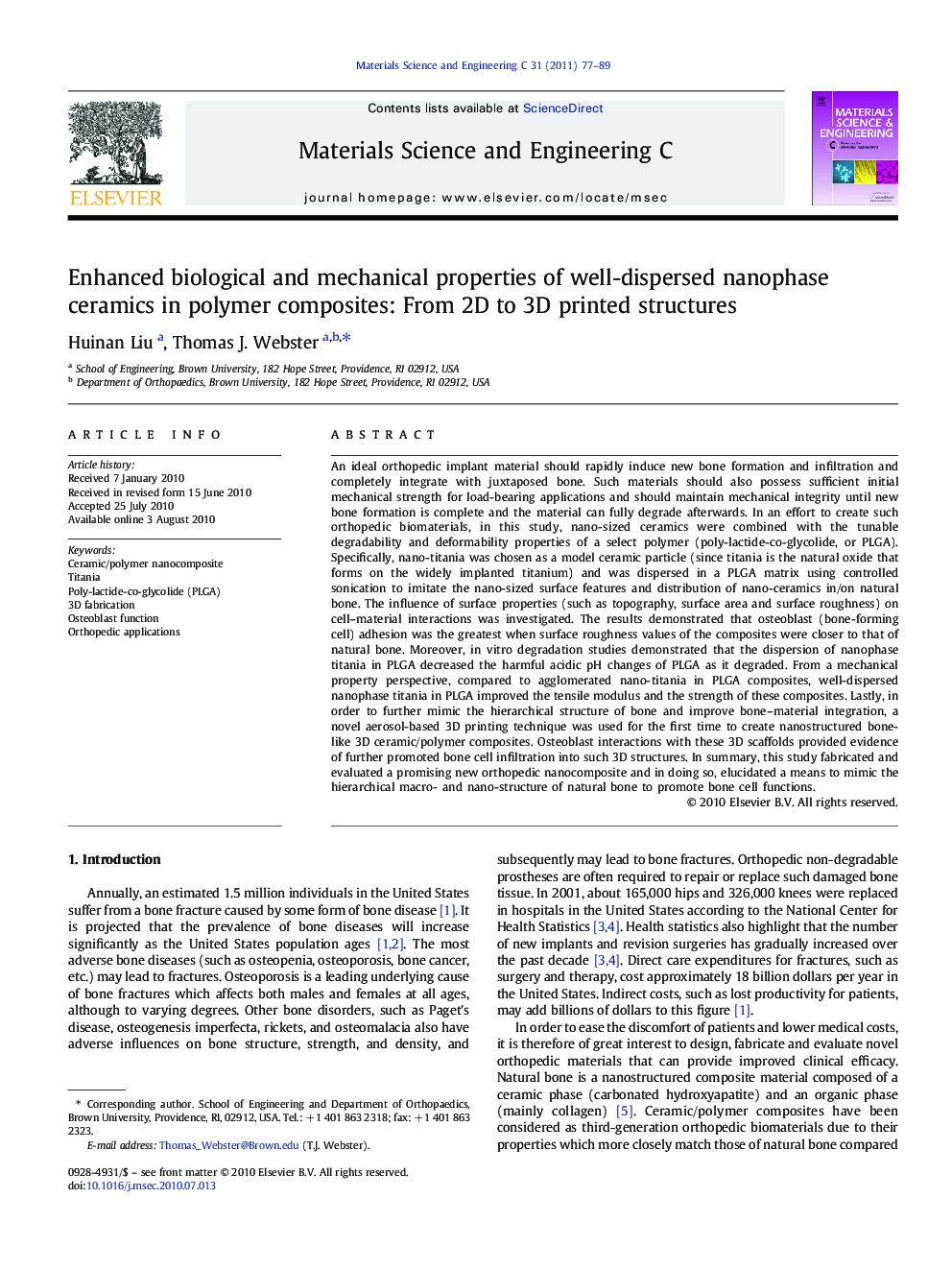| کد مقاله | کد نشریه | سال انتشار | مقاله انگلیسی | نسخه تمام متن |
|---|---|---|---|---|
| 10614752 | 987173 | 2011 | 13 صفحه PDF | دانلود رایگان |
عنوان انگلیسی مقاله ISI
Enhanced biological and mechanical properties of well-dispersed nanophase ceramics in polymer composites: From 2D to 3D printed structures
دانلود مقاله + سفارش ترجمه
دانلود مقاله ISI انگلیسی
رایگان برای ایرانیان
کلمات کلیدی
موضوعات مرتبط
مهندسی و علوم پایه
مهندسی مواد
بیومتریال
پیش نمایش صفحه اول مقاله

چکیده انگلیسی
An ideal orthopedic implant material should rapidly induce new bone formation and infiltration and completely integrate with juxtaposed bone. Such materials should also possess sufficient initial mechanical strength for load-bearing applications and should maintain mechanical integrity until new bone formation is complete and the material can fully degrade afterwards. In an effort to create such orthopedic biomaterials, in this study, nano-sized ceramics were combined with the tunable degradability and deformability properties of a select polymer (poly-lactide-co-glycolide, or PLGA). Specifically, nano-titania was chosen as a model ceramic particle (since titania is the natural oxide that forms on the widely implanted titanium) and was dispersed in a PLGA matrix using controlled sonication to imitate the nano-sized surface features and distribution of nano-ceramics in/on natural bone. The influence of surface properties (such as topography, surface area and surface roughness) on cell-material interactions was investigated. The results demonstrated that osteoblast (bone-forming cell) adhesion was the greatest when surface roughness values of the composites were closer to that of natural bone. Moreover, in vitro degradation studies demonstrated that the dispersion of nanophase titania in PLGA decreased the harmful acidic pH changes of PLGA as it degraded. From a mechanical property perspective, compared to agglomerated nano-titania in PLGA composites, well-dispersed nanophase titania in PLGA improved the tensile modulus and the strength of these composites. Lastly, in order to further mimic the hierarchical structure of bone and improve bone-material integration, a novel aerosol-based 3D printing technique was used for the first time to create nanostructured bone-like 3D ceramic/polymer composites. Osteoblast interactions with these 3D scaffolds provided evidence of further promoted bone cell infiltration into such 3D structures. In summary, this study fabricated and evaluated a promising new orthopedic nanocomposite and in doing so, elucidated a means to mimic the hierarchical macro- and nano-structure of natural bone to promote bone cell functions.
ناشر
Database: Elsevier - ScienceDirect (ساینس دایرکت)
Journal: Materials Science and Engineering: C - Volume 31, Issue 2, 12 March 2011, Pages 77-89
Journal: Materials Science and Engineering: C - Volume 31, Issue 2, 12 March 2011, Pages 77-89
نویسندگان
Huinan Liu, Thomas J. Webster,